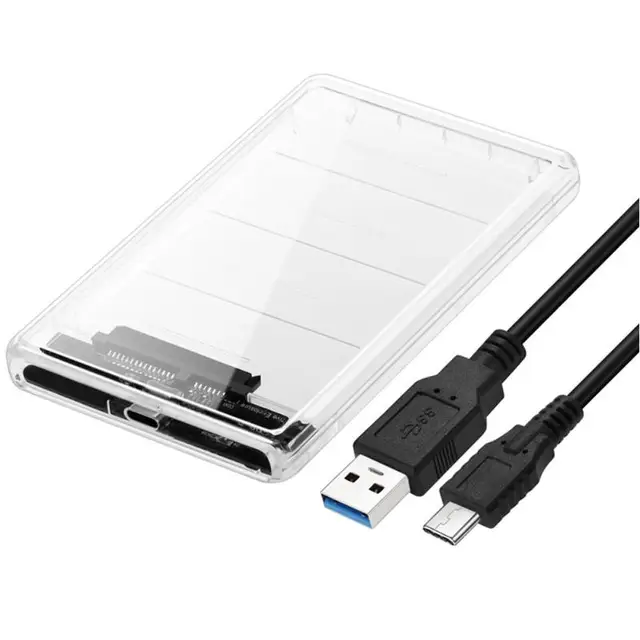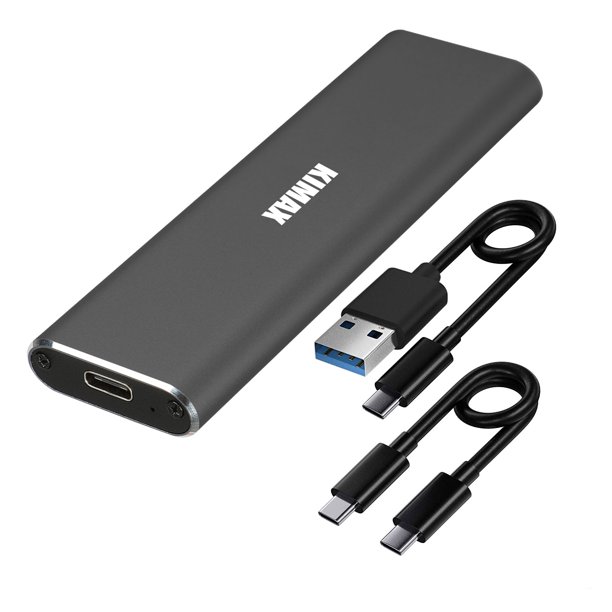
Logic pro x 10 4 8 free download. Congrats, you now have an external USB-C hard drive or SSD! There are tons of uses for external hard drives, and they make exceptional backup media for holding your System Image backups. Bottom line: You can easily convert any bare 2.5 inch or 3.5 inch drive or SSD into a super-fast external USB-C 3.1 drive without spending a ton of cash. Shop for Portable Hard Drives and Wireless Portable Hard Drives at everyday low prices. Shop now with Afterpay and Zip. Enjoy free delivery on orders over $55. Featuring a versatile USB 3.1 Gen 1 interface to meet the needs of the creative enthusiast, this drive is encased in an all-aluminum enclosure that looks as good on your desk as it does on a shoot. It's designed for storage-intensive, multimedia files, including HD video, photos, and music. With support for up to 45 watts of USB Power Delivery through the USB-C port, this drive can charge. Support 2x 10TB hard drive; Supports 2.5' & 3.5' SATA (SATA I/ II/ III) HDD and SSD - Equipped with Type C USB 3.1; Backward compatible with USB 3.0/2.0 /1.1 - Compatible Systems: Windows 7/ 8/10, Mac OS - On/Off power switch; LED light indicates Power and Activity status; Initiates sleep mode after 30 minutes of no operation Chip scheme.
SSD vs HDD, which is better for C drive?
You may be curious about why people need to clone or transfer C drive to SSD (Solid-state Drive). To figure this puzzle out, you have to know the advantages of SSD comparing to HDD (Hard Disk Drive). Usually, your computer was equipped with HDD by its OEM (Original Equipment manufacturer). To sum up, comparing with traditional hard disk drive, SSD has following advantages:
Faster speed of reading and writing, which reduces the time of Windows OS boot up.
Better experience with portability.
Lower power consumption. Adobe reader x for windows 8.
Nearly none noise and heat producing.
Better shock persistence, which decrease the risk of losing data caused by shake and strike.
However, HDD also has its merits. https://tutorfree.mystrikingly.com/blog/flat-grass-map-minecraft-pe. Since there is no reading and writing times limit on HDD, it is a great data storage device. Therefore, some users use hard drive and SSD combo in their computer. But other users who have only one disk bay like laptop on their computer and want to benefit from SSD, they have to upgrade laptop hard drive to SSD entirely. Now, you may have the idea which one is better for OS installation.
Solid State Hard Drives
Before you move C drive to SSD in Windows
Can you clone only C drive to SSD? Absolutely Yes! But before you start, make sure to backup system and data firstly. This transferring process will not cause data losing, but you cannot be more careful with your data.
What's more, for desktops, an SSD with a 60 GB capacity is usually sufficient. For laptops, it is more complicated because you normally have only one disk bay. And if you move around a lot with the laptop, a bigger SSD (120 GB or 250 GB) may be in order, with the budget allowing anyway.
The most important thing is the storage space must be large enough to store your Windows OS (go check use state out in Disk Management). If not, and you don't want to purchase a larger one, then uninstall some applications or files to minimize your C drive.

Logic pro x 10 4 8 free download. Congrats, you now have an external USB-C hard drive or SSD! There are tons of uses for external hard drives, and they make exceptional backup media for holding your System Image backups. Bottom line: You can easily convert any bare 2.5 inch or 3.5 inch drive or SSD into a super-fast external USB-C 3.1 drive without spending a ton of cash. Shop for Portable Hard Drives and Wireless Portable Hard Drives at everyday low prices. Shop now with Afterpay and Zip. Enjoy free delivery on orders over $55. Featuring a versatile USB 3.1 Gen 1 interface to meet the needs of the creative enthusiast, this drive is encased in an all-aluminum enclosure that looks as good on your desk as it does on a shoot. It's designed for storage-intensive, multimedia files, including HD video, photos, and music. With support for up to 45 watts of USB Power Delivery through the USB-C port, this drive can charge. Support 2x 10TB hard drive; Supports 2.5' & 3.5' SATA (SATA I/ II/ III) HDD and SSD - Equipped with Type C USB 3.1; Backward compatible with USB 3.0/2.0 /1.1 - Compatible Systems: Windows 7/ 8/10, Mac OS - On/Off power switch; LED light indicates Power and Activity status; Initiates sleep mode after 30 minutes of no operation Chip scheme.
SSD vs HDD, which is better for C drive?
You may be curious about why people need to clone or transfer C drive to SSD (Solid-state Drive). To figure this puzzle out, you have to know the advantages of SSD comparing to HDD (Hard Disk Drive). Usually, your computer was equipped with HDD by its OEM (Original Equipment manufacturer). To sum up, comparing with traditional hard disk drive, SSD has following advantages:
Faster speed of reading and writing, which reduces the time of Windows OS boot up.
Better experience with portability.
Lower power consumption. Adobe reader x for windows 8.
Nearly none noise and heat producing.
Better shock persistence, which decrease the risk of losing data caused by shake and strike.
However, HDD also has its merits. https://tutorfree.mystrikingly.com/blog/flat-grass-map-minecraft-pe. Since there is no reading and writing times limit on HDD, it is a great data storage device. Therefore, some users use hard drive and SSD combo in their computer. But other users who have only one disk bay like laptop on their computer and want to benefit from SSD, they have to upgrade laptop hard drive to SSD entirely. Now, you may have the idea which one is better for OS installation.
Solid State Hard Drives
Before you move C drive to SSD in Windows
Can you clone only C drive to SSD? Absolutely Yes! But before you start, make sure to backup system and data firstly. This transferring process will not cause data losing, but you cannot be more careful with your data.
What's more, for desktops, an SSD with a 60 GB capacity is usually sufficient. For laptops, it is more complicated because you normally have only one disk bay. And if you move around a lot with the laptop, a bigger SSD (120 GB or 250 GB) may be in order, with the budget allowing anyway.
The most important thing is the storage space must be large enough to store your Windows OS (go check use state out in Disk Management). If not, and you don't want to purchase a larger one, then uninstall some applications or files to minimize your C drive.
The easiest way to copy C drive to new SSD is using third party OS migration software. AOMEI Backupper Professional is reliable and all-around OS and disk cloning software that allows you to clone C drive to SSD in Windows 10, 8, 7 as well as their previous versions.
By default, it will clone only used part of C drive, which makes it possible to copy C drive to smaller SSD. System Clone, Disk Clone and Partition Clone features are available.
How to transfer C drive to SSD in Windows 10 step by step?
In the first place, connect your SSD to your computer and make sure it can be detected by Windows. For a laptop, you may need an USB adapter.
Step 1. Install and launch AOMEI Backupper. Select 'Clone'-> 'System Clone'.
Atom c windows. Step 2. Choose the new SSD as the destination disk to copy C drive to.
Step 3. Check the 'Operation Summary' (the C drive and system reserved are selected by default, which can make sure normal boot from SSD). Tick 'SSD Alignment' and Click 'Start Clone' after your confirmation. Run windows 10.
Step 4. Shut down your computer after the cloning process completes. Now, you can change boot order in BIOS or remove old hard drive to see if you can boot from cloned SSD. The second method is recommended.
Innovative technology filmscan 35 driver. Tips:
'Sector by sector': if you check this option, the software will clone every sector whether it is used or not. It also requires the destination SSD should be equal or larger than C drive.
'SSD Alignment': since the destination disk is SSD, it is strongly recommended you to check this option to improve SSD read and write speed and prolong SSD's lifespan.
How to replace C drive with SSD by Windows built-in utilities?
Ssd Hard Drive Amazon
Fnaf night 10. If you want to operate all of this by manually practice, try this solution. The second solution, transfer system drive to SSD using Windows tools and some manually practical operations (take Windows 7 for example).
1. Shrink the C drive to fit on the smaller SSD because normally the HDD is much more larger than the SSD. Right-click 'Computer'-> 'Manage'-> 'Disk Management' and right-click the C drive, select 'Shrink Partition'. (In ‘Enter the amount of space to shrink in MB' enter a value that's at least 10% smaller than the usable capacity of your SSD).
2. Backup the shrunken C drive and its system reserved partition to backup disk. Head to 'Control Panel'-> 'System and Security'-> 'Backup and Restore'-> 'Create a system image'. After the backup image is made, it will ask for creating a repair disc. If you have Windows Installation disk, then click 'No', if not, prepare a CD/DVD and click 'Yes' to go through the wizard. Then, shut down your computer.
3. Install SSD and restore from the backup image. Open your PC case and disconnect all drives except for backup disk. Insert the repair disk or Windows 7 installation disk. After the PC boot from the optical disc, select 'Repair your computer'-> 'Restore your computer using a system image that you created earlier'-> 'Use the latest available system image'.
Make sure there is only one hard drive that you want to restore because it will be erased. If there are other hard drives, you should exclude them. Click 'Next'-> 'Finish'-> 'Don't Restart'-> 'Shutdown'.
4. Plug all the drives back in except for the original OS drive to check out whether the computer will boot successfully or not. Boot your computer and open Disk Management. Right-click the new OS partition and select 'Extend Volume' to fill the SSD. (Do not adjust the default value because Windows will automatically calculate it.)
Enter a single command via the command prompt in administrator mode. Go to 'Start'-> 'All programs'-> 'Accessories', then right-click 'Command Prompt' and run it as an administrator. Type in this command: Winsat disk. This command line makes Windows detect the new drive as an SSD and thus enable all the features unique to these drives.
Tips: As for the old HDD, you can use it as a secondary storage for your computer after SSD works well and formatting the old C drive.
Summary
Two different ways to transfer C drive to SSD. Choose the most suitable one for yourself and begin to try. Actually, you can do more things with AOMEI Backupper, for example, transfer files from SSD to HDD for backup in the future. To add extra protection for your system, you can create a bootable rescue media in case system fails unexpected.
Besides, AOMEI Backupper provides Server edition that can help you clone system drive to new hard drive in Windows Server 2008, 2012, 2016 etc.
